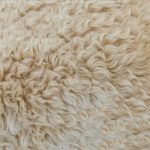When it comes to caring for your Madras plaid garments, you might be wondering about the best practices to maintain their vibrant colors and unique patterns. Start by always checking the care label for specific guidelines tailored to your piece. You should wash them in cold water and consider turning them inside out to prevent fading. However, there's more you need to know about drying and ironing that can significantly affect the longevity of your favorite items. What tips are essential for keeping those colors bright and patterns intact?
Table of Contents
Understanding Madras Fabric
Madras fabric, known for its vibrant, multicolored check patterns, is a lightweight cotton that breathes well and adds a touch of summer flair to your wardrobe. Originating from India, this fabric's unique charm comes from its intricate dyeing and weaving process.
You'll appreciate how these checks can brighten up any outfit, whether you're heading to a beach party or a casual outdoor gathering.
One key feature of Madras is its tendency to fade over time, creating a well-loved, vintage look. This fading, while initially alarming, is a part of the fabric's character, making your pieces feel uniquely yours. When you wear Madras, you're not just donning a fabric; you're embracing a piece of cultural history.
It's crucial to note that Madras isn't just visually appealing; it's also comfortable. The lightweight cotton allows for excellent air circulation, so you won't overheat during warm days. Plus, its softness against your skin makes it ideal for all-day wear.
As you explore the versatility of Madras fabrics, you'll find they're not just confined to shirts and shorts; they can also be stunning in dresses and accessories.
Washing Madras Plaid Clothes
When you wash your Madras plaid clothes, it's important to handle them with care to maintain their vibrant colors and soft texture.
Start by checking the care label for specific instructions. Most Madras garments are machine washable, but it's wise to wash them in cold water to prevent fading and shrinkage.
Turn the clothing inside out; this minimizes color loss and protects the fabric's surface. Use a gentle detergent, ideally one meant for delicate fabrics. Avoid bleach and fabric softeners, as they can harm the fabric and affect the colors.
If you're dealing with stains, pre-treat them with a mild stain remover before washing. Opt for a gentle cycle on your washing machine to reduce agitation and friction.
If you have multiple items to wash, separate darker and lighter colors to prevent color bleeding.
After the wash, don't wring or twist the garments, as this can distort their shape. Instead, gently squeeze out excess water while keeping the fabric flat.
Drying Techniques
To keep your plaid garments looking their best, choose air drying over tumble drying whenever possible. Air drying helps preserve the colors and fabric integrity of Madras plaid, preventing shrinkage and damage to the fibers. Simply hang your garments on a clean, flat surface or use a clothesline; avoid direct sunlight to prevent fading.
If you do use a dryer, opt for a low heat setting and remove the clothing while it's still slightly damp. This reduces the chances of shrinkage while still allowing the fabric to dry. Make sure to separate lighter colors from darker ones to avoid color transfer, as plaid garments often feature multiple vibrant shades.
Keep in mind that overloading the dryer can lead to uneven drying and creasing. To ensure even drying, give your clothes some space to move around. If your garment is particularly delicate, consider placing it in a mesh laundry bag to protect it during the drying cycle.
Lastly, always check care labels for specific drying instructions, as different types of Madras fabrics may have unique needs. Following these drying techniques will help your plaid garments stay fresh, vibrant, and looking great for longer.
Ironing and Pressing Guidelines
Ironing your plaid garments correctly helps maintain their crisp appearance and vibrant colors. Start by checking the fabric care label for specific instructions. Generally, it's best to set your iron to a medium heat setting, which is ideal for cotton and blended fabrics commonly used in Madras plaid. Always make sure the soleplate is clean to avoid transferring any residues onto your fabric.
Before ironing, turn your garment inside out to protect the surface from potential shine or scorching. If the fabric is particularly wrinkled, you might consider lightly misting it with water or using steam to help ease out the creases. When you begin pressing, work in sections, and use smooth, even strokes without applying excessive pressure; this prevents damaging the fibers.
Pay special attention to seams and collars, as these areas might need a bit more care. Avoid sliding the iron too much, since this can distort the pattern. Once you've finished, hang your garment immediately to maintain its shape. By following these guidelines, you'll ensure that your Madras plaid pieces stay looking fresh and vibrant after each wear.
Storing Your Madras Garments
Properly storing your Madras garments is essential to keep them looking their best and prevent any damage. Whether it's a vibrant shirt or a classic skirt, you want to ensure they retain their color and avoid any unwanted creases. Here are a few tips to help you store your Madras clothing effectively:
- Choose a cool, dry space: Humidity can create mold or mildew, so pick a place with low moisture levels.
- Use padded hangers: By using padded hangers, you'll prevent stretching or distortion of the fabric.
- Avoid direct sunlight: Keep your Madras garments away from direct sunlight to prevent fading. Sunlight can significantly diminish their vibrant colors over time.
Following these simple storage tips will help maintain the quality of your Madras plaid garments.
You want them to stay fresh for many summers to come! Proper care ensures your favorites remain ready to shine whenever you wear them.
Troubleshooting Common Issues
Dealing with common issues that arise with Madras garments can help you keep them looking their best and extend their life.
One frequent problem is color fading, especially after several washes. To tackle this, always wash your Madras clothes in cold water and avoid prolonged exposure to direct sunlight when drying. For any stubborn stains, treat them quickly with a mild detergent and avoid bleach, which can ruin the vibrant colors.
Another concern is wrinkling, which can be common with cotton fabrics. To minimize this, remove your garments from the dryer while they're still slightly damp, and hang them up to finish drying. If wrinkles persist, a low-heat iron can work wonders; just use a pressing cloth to prevent direct heat on the fabric.
Lastly, you might notice fraying around the edges due to wear. To address this, carefully trim any loose threads, and handle your Madras items gently during washing and wearing.
Frequently Asked Questions
Can I Wear Madras Plaid in Winter?
Yes, you can definitely wear madras plaid in winter! Just layer it with warmer clothing, like a cozy sweater or jacket, and pair it with suitable accessories to keep warm while staying stylish.
Do Madras Plaid Garments Shrink After Washing?
Yes, madras plaid garments can shrink after washing, especially if they're made from cotton. To minimize shrinkage, it's best to use cold water and avoid high heat when drying. You'll maintain their size longer that way.
Are Madras Colors Prone to Fading Over Time?
Yes, madras colors can fade over time, especially with regular washing and sun exposure. To minimize fading, you should wash them in cold water and avoid prolonged sunlight. That way, your vibrant colors last longer!
Can I Mix Madras Plaid With Other Patterns?
You can definitely mix madras plaid with other patterns! Just keep the colors in harmony and vary the scale of patterns for balance. It creates a fun, stylish look that showcases your unique fashion sense.
Is Madras Fabric Suitable for Formal Occasions?
Madras fabric can add a vibrant touch to your outfit, but it's usually too casual for formal occasions. If you're aiming for a refined look, consider more traditional fabrics like silk or wool instead.
- How Does Ring Spun Cotton Affect Garment Fit and Shape Retention? - August 13, 2024
- What Are the Challenges in Producing Ring Spun Cotton? - August 13, 2024
- Is Ring Spun Cotton Suitable for Plus-Size Clothing? - August 13, 2024







